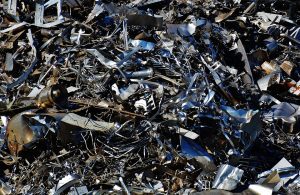Choosing to transition to eco friendly jewelry production is not only easier on the environment, it is also highly desirable to customers. Today’s consumers are more ethically minded than ever, and are guided by moral values when they shop. Learning how to make eco-friendly jewelry allows you to target customers who prioritize sustainability, and ensures we can help you create sustainable pieces.
Why Jewelry is so Hard on the Planet
The first thing to consider when figuring out how to make eco-friendly jewelry are the raw materials. Although jewelry seems small and harmless, jewelry production is actually an incredibly damaging industry for the environment. Much of this devastation occurs during the metal extraction process. When precious metals are mined, the soil’s surface is stripped, which causes erosion, sinkholes, soil contamination, and a loss of biodiversity. In addition, the harsh chemicals used in mining causes serious damage to local ecosystems.
In the United States, we have some of the most stringent regulations for metal extraction to help minimize its damage on the environment. In developing countries, like India or China, where regulations are less severe or less well enforced, metal mining can lead to lead poisoning, or heavy metal soil contamination. Here, we manage to avoid much of that damage with better regulation.
A More Eco Friendly Option for Metal

Luckily, there are ways to create new, beautiful jewelry without harming the planet. An important step in learning how to make eco-friendly jewelry is choosing sustainable metal. Metal can be easily recycled, and jewelry fabricators are beginning to use recycled metal in their manufacturing processes. By using recycled metal, we can create new, beautiful jewelry from discarded metal, without requiring environmentally damaging metal extraction.
Recycled metal reclaims gold, silver, platinum, and other metals and refines them back into their pure form. These recycled metals are much gentler on the planet and are just as high quality as traditionally mined precious metals.
The Gemstone Industry
Metal extraction is not the only problematic part of the jewelry industry. Another thing to think about when learning how to make eco-friendly jewelry is the ethics of precious stones. Gemstone mining, particularly diamond mining, is a problematic industry, entangled with the arms trade, slavery, and environmental damage.
A large percentage of the world’s diamonds are sourced from Africa and many of these African diamond mines are owned by warlords who exploit cheap local labor and sell the diamonds to other countries. In recent years, awareness about these “conflict diamonds” has become more widespread, resulting in a downturn in diamond sales.
Global Witness, an NGO fighting corruption in natural resource extraction, reports that more than a million diamond workers around the world work in dangerous conditions for less than a dollar a day. America has additional strict regulations that prevent the sales of conflict diamonds.
How To Make Eco-Friendly Jewelry with Diamonds

While conflict diamonds are troubling, you can still enjoy a sparkly gemstone without the moral dilemma. There are a growing number of diamond distributors who are committed to providing conflict free diamonds to jewelers. The Kimberly Process is an international certification process meant to keep diamonds that have funded wars out of the marketplace.
When you are deciding how to make eco-friendly jewelry, be sure you are purchasing conflict free diamonds. Beyond the label of conflict free, you should question your diamond distributor about its labor and environmental practices.
Canadian diamonds are among some of the most ethical diamonds in the world. They are mined in accordance to strict regulations set in place by the Canadian government to protect the environment and the indigenous people living in the region. Namibia and Botswana are two other countries doing an exceptionally good job regulating the diamond industry. The diamond mining industries in these two countries help support infrastructure and education in the local communities, and follow strict labor and environmental laws.
If you would prefer to avoid diamonds altogether, there are also a wide variety of precious and semi precious stones that are just as stunning. A little bit less conventional than the standard diamond, sapphires, emeralds, and other gemstones can make for beautiful and unusual jewelry designs.
Going Green in Manufacturing

Besides ethical and eco friendly sourcing for materials, there is plenty of room to make the jewelry industry more sustainable on the fabrication side. Investing in more energy efficient kilns and ovens can dramatically reduce your carbon footprint, while working with US based manufacturers helps ensure that your factory is abiding by environmental regulations.
